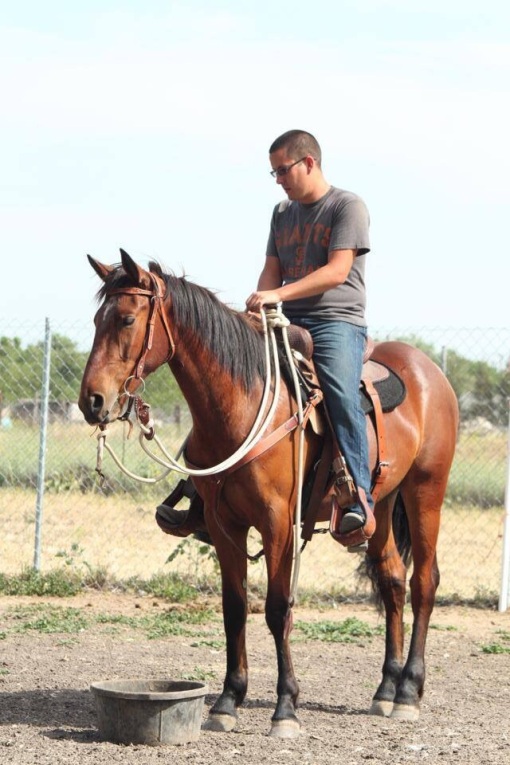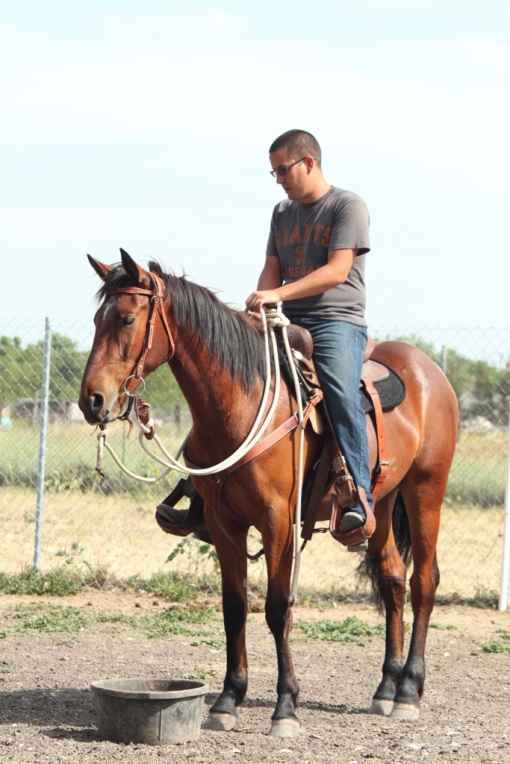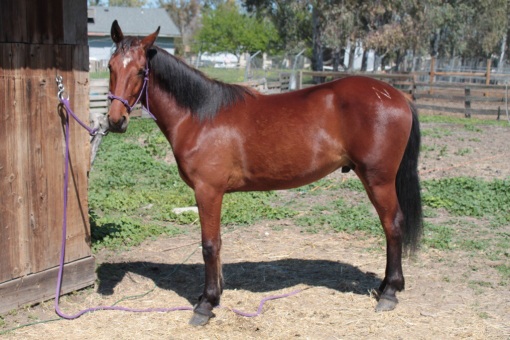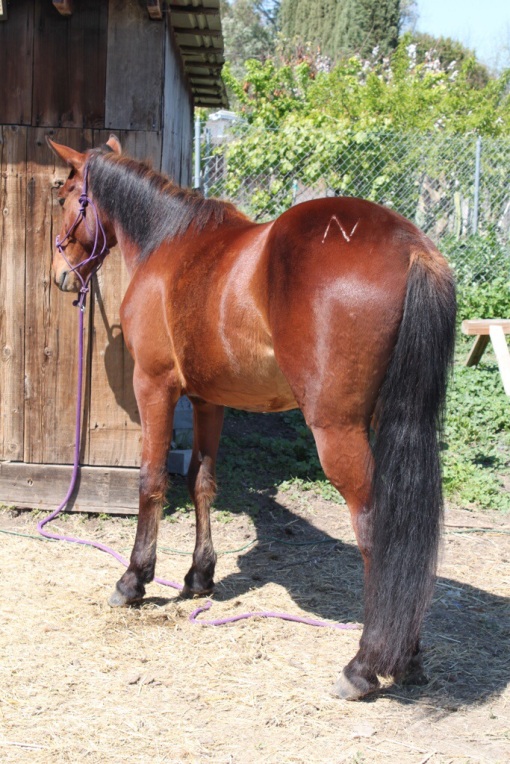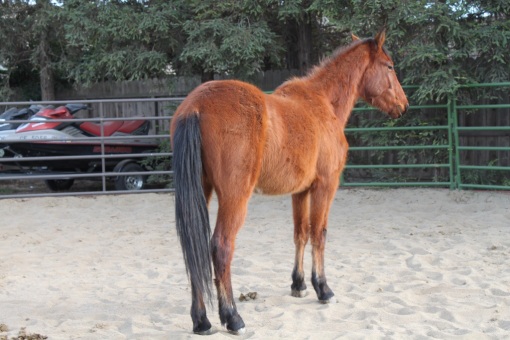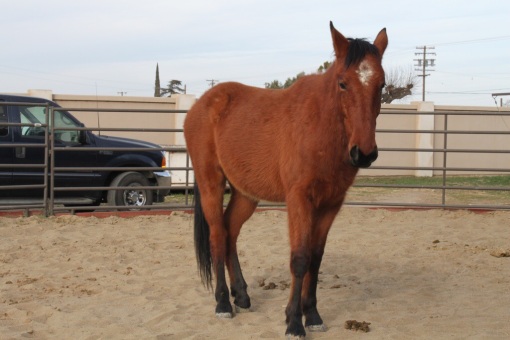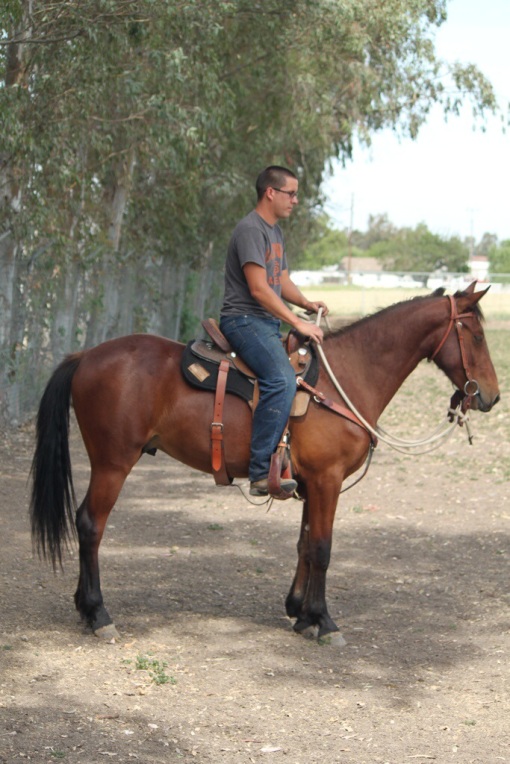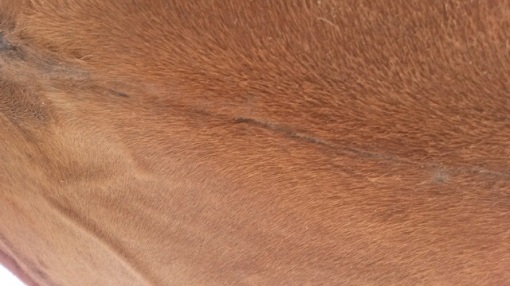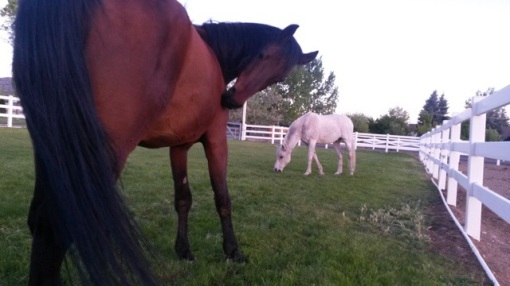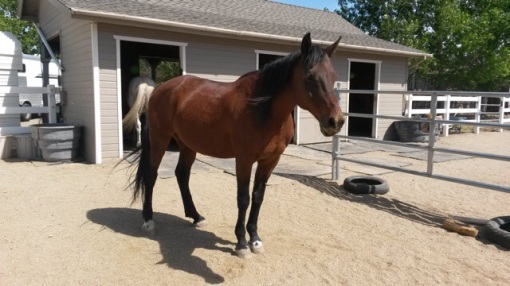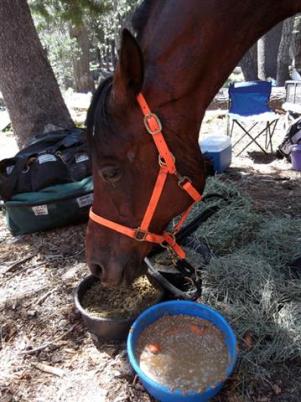We have a unique barrel program. Elk Grove Milling packages Stable Mix products and other forage feeds in 50 # bags and also specially chosen recycled 55 gal drums, which hold 250# of pellets. The barrels are a deposit item only, not for resale and are the sole property of Elk Grove Milling, Inc. When barrels of feed are empty, customer will return the barrel to a feedstore which carries EGM products in exchange for a full barrel of pellets. The deposit for the barrel is a one time fee. The 55-gallon drums come in two styles*: 1. Open mouth barrels. These have no top but vinyl caps are available for purchase, and 2. Black barrel twist top lid. For ease in handling and quality control, most feed stores prefer the twist top barrels. Due to Elk Grove Milling’s pelleting process, our feeds are “Certified Weed Free” by the state of California Department of Food and Agriculture. Our feeds are welcome in the Federal parks, BLM land and the US Forest Service lands. Having “Certified Weed Free” printed on the bags and the ingredient tags, ensures ease in entering parks and other states. If any, weed seed particles are non-viable, thus preventing the spread of noxious weeds. Many individuals who enjoy trail riding in the hills, mountains, out of state, hunting, etc. enjoy the benefit of feeding EGM pellets. Our pellets are cleaner, less waste and approved by State of California Department of Food and Ag.
2014 Extreme Rescue Makeover write up
30 06 2014Tears of joy streamed down my face. Hugs poured in from family, friends, and fellow contestants. The results of the 2014 Extreme Rescue Makeover had just been announced and I was clutching a Second Place trophy. I couldn’t be any happier. As the celebration wound down and a multitude of pictures had been taken, I couldn’t help but reminisce about the wild ride I had been on with a wild mustang.
I had been around horses a little bit at a young age; tagging along with my older sister as she took riding lessons. Two years ago, my life changed forever. At the time, I was battling depression and had tried a vast array of medications and treatments prescribed by doctors. Nothing seemed to help. One day, I accompanied my niece to a her gymkhana lessons and stood there in awe as I watched this tiny ten year old girl work alongside, and on top of, a gentle giant. Her trainer, Mindy Konradi, was also the operator of a Therapeutic Riding Academy for disabled children. As I continued to attend the gymkhana lessons, I began to notice a change in my outlook on life. I began volunteering at the Therapeutic Riding Academy and found that I was beginning to win the fight against depression as I spent more and more time around horses.
In 2013, Mindy Konradi participated and won the Extreme Rescue Makeover. The program rescues wild mustangs and saves them from slaughter. Horses thought to be unadoptable are given to trainers who are tasked with the responsibility of teaching these wild animals to trust humans and live in as they described, “Humanville.” I knew that horses had changed my life and I wanted to do the same for them. I threw my hat into the ring- or more appropriately the arena- and entered the 2014 Rescue Makeover.
In January of 2014, I was the first person in line at the Horse Plus Humane Society’s headquarters in Oroville to find the perfect match for the Extreme Rescue Makeover. I quickly came across Roscoe. Roscoe is a 2 ½ year old Mustang who had never been touched by a human. He had recently been rescued from the Virginia Range in Nevada. Immediately upon seeing Roscoe, I knew that our lives would change forever.
Roscoe was small, skinny, malnourished, and his coat was very shaggy. I teamed with Elk Grove Milling and Roscoe was placed on a diet which primarily consisted of Stable Mix. In just five short months, Roscoe had grown taller, filled out, and sported a beautiful shiny coat. On the day of the final competition, Roscoe drew praise from dozens of people for his new-found physique, his playful and gentle demeanor, and his gorgeous appearance. He also drew great commendations from the veterinarian at the competition. Roscoe not only looked good, but he was a completely healthy horse that stood motionless as the veterinarian performed a very complete examination. In becoming a healthy and handsome horse, Roscoe had completed one aspect of his transformation from, “A Wild Mustang,” to, “A Human’s Companion.”
As the days turned to weeks and the weeks turned to months, Roscoe and I worked tirelessly on everything from footwork and simple commands to complex tasks which would ultimately aid in him earning a Second Place finish. By the end of the fifth month, Roscoe had mastered ground work, walking through a cowboy curtain, trotting over cavalettis, negotiating narrow lanes full of empty plastic bottles, and even jumping over barrels. As with all great athletes, Roscoe stumbled a little during the Freestyle Event. Roscoe, overcome with nervousness, froze when we were supposed to ride onto a shipping crate. We bypassed the obstacle and continued with the rest of the routine which ended with Roscoe trotting as he followed me across the arena. Not wanting to leave Roscoe or the crowd disappointed, I got back into the saddle and took Roscoe back to the shipping crate. Although he was still nervous, his trust in me prevailed and we scaled the crate. The crowd erupted and I was overcome with a sense of joy and accomplishment.
It’s been less than a week since the 2014 Extreme Rescue Makeover ended and I’m still in shock over how Roscoe performed. As the messages and photos pour into Roscoe’s Facebook page, I can’t help but travel back in time throughout our experience. Seeing Roscoe transform from a shaggy horse which nobody wanted to a magnificent companion has been the experience of a lifetime. I began this journey wanting to teach and train a horse. As I look back, I realize it was Roscoe that did the teaching and me the learning. He taught me more about patience, trust, and teamwork than I ever thought possible. This experience would not have been as rewarding, let alone possible, if not for the support of my family, friends, and sponsors. Roscoe and I thank you all for the ride.
Comments : Leave a Comment »
Categories : Uncategorized
2014 Extreme Rescue Makeover
27 06 2014Elk Grove Milling sponsored Joseph Houtekamer & the mustang Roscoe for the 2014 Extreme Rescue Makeover.
Roscoe is 2 1/2 and he is a mustang off of the Virginia Range in Nevada.
Here is their profile.
http://extremerescuemakerover.horsehumane.org/roscoe.html
Comments : Leave a Comment »
Categories : Uncategorized
Bo’s Colic Surgery Recovery-Karen Chaton
5 06 2014Elk Grove Stable Mix
May 2014, Karen Chaton
We has a good strong start to the 2014 ride season. Bo has completed 400 miles including finishing in the top ten at the 20 Mule Team 100. Chief has completed 250 miles. The last ride I did was the Nevada Derby, a local ride to me at Washoe Lake, Nevada. I decided to try for the NASTR Triple Crown this year on Bo. The first ride was the 50 at the Derby, then the second ride in May would be the NASTR 75 miler and the final and third ride would be the Viginia City 100 in September.
You know what they say about the best laid plans. I usually don’t plan that far in advance even if I do set goals for the year I like to get through the next ride before planning to far ahead of that. As it turned out, a few days after the Derby ride Bo colicked. I only noticed that he wasn’t right because he only ate part of his Stable Mix mash. He always finishes ALL of his Stable Mix so I knew something was wrong. Plus, he was covered in hives.
As it turned out, I ended up taking Bo to not one, but two different vet clinics. In the end, the problem turned out to be a 180 degree twist that required surgery. Fortunately, there was no serious damage to Bo’s intestines and they were able to correct the twist and work everything through without needing to cut into it. He came through the anesthesia really well and then spent a total of 10 days at the vet clinic.
We were really lucky to have caught the problem early and get Bo into surgery since that greatly improved his chances of survival. It helped that he was a good patient. We knew when he was reaching through the stall and chewing up his lead rope that he was feeling back to his normal self and was finally able to come home.
It’s now been about six weeks since the surgery and Bo has been recovering amazingly well. Initially I was able to start walking him three times a day for a mile each. When Bo’s staples were removed from the incision site the vet was impressed at how well things had healed up, with no swelling. I was able to start increasing the amount of exercise Bo was getting and even started to do a little bit of trotting. I also was able to turn him out from a small paddock and stall into a larger paddock. A week after that I started riding him and also started turning him out for a few hours at a time with Chief, keeping an eye on him to make sure he didn’t get too rambunctious. Fortunately, because of the increase in exercise and turnout Bo was able to stay calm and laid back. He was also allowed to graze as much as he wanted. We were worried that Bo might get into trouble if we tried to keep him confined for too long. Bo is the kind of horse that gets bored being turned out 24×7 only a week after doing a 100 miler.
Knocking on wood everything is still going well. I’m still feeding Bo his Stable Mix mashes four or five times a day spread apart a few hours and in between giving him his grass/alfalfa hay mix. The veterinarians prescribed the same diet for Bo that he had been on – the grass/alfalfa mix hay and Elk Grove Stable Mix (regular formula, with G&C). They were not able to confirm the cause of why Bo colicked though something obviously disrupted his gut long enough to cause a malfunction. It’s possible that the hives he had were caused by something he ate that blew into his pen or pasture and that caused him to start to go off of his feed. He does tend to eat things that Chief won’t touch. They also said the change in weather could have been a factor.
The good news is that Bo has an over 90% chance to make a full recovery and return to endurance if that’s what I want to do with him. He is happiest when he has a job to do and loves to get out on the trail.
I’m really fortunate that Stable Mix is available in my area because it helped Bo to regain the weight he lost from the surgery. I also felt better being able to feed it soaked knowing that would help to keep him hydrated. It only took Bo a few days to bounce back to his normally rounder shape and also to have a nice shiny coat. I know it’s the Stable Mix that does that because I am not feeding him any other supplements right now other than a little bit of probiotics and Redmond Daily Gold as prescribed by the vet. I knew Bo was going to be okay when he would see me in the barn and stop grazing on the grass to come over and wait patiently for his next Stable Mix mash – it is his favorite. Okay, so maybe he isn’t always that patient about waiting!
If after a few more rides, Bo continues to do as well as he has been I’m going to send an entry in for him for a fairly local endurance ride at the end of June. For now, we will stick to the rides that are closer and just do one day and see how it goes. We missed the middle ride of the Triple Crown, but you never know maybe everything will fall into place and we’ll be able to make it to the September ride. One day at a time, and I’ll only plan as far ahead as the next ride for awhile. There are some endurance horses out there that have completed more miles after having a colic surgery than they did before.
Comments : Leave a Comment »
Categories : Uncategorized
1st Quarter 2014 Newsletter
3 03 2014Carbohydrates Part 1:
What is NSC anyway?
Written by Dr. Clair Thunes, PhD
You see it everywhere these days, feeds proclaiming to be “low starch”,
“controlled starch”, “low carb”. A friend might tell you her horse
needs to be on a “no carb” diet, although that is completely impossible
for a horse, and that she is stressed because she can’t find a “low
NSC” forage. It all starts to make you wonder if your horse should be
on a low starch low sugar diet. But then what does that really mean
anyway? In this newsletter we are going to take a look at what this
terminology means and then next time we will discuss what all this
means to your horse and whether he’s a candidate for such a diet.
Carbohydrates come in many forms but for simplicity we can
class them into two groups. The structural carbohydrates and the
non-structural carbohydrates. As the name suggests, structural
carbohydrates help plants maintain rigidity, they provide form and as
such they are quite complex, and they are found in high concentrations
in plant stems. Their form makes them hard to digest. In fact you and
I are essentially unable to digest these structural carbohydrates such
as cellulose and lignin because we lack the enzyme necessary to break
the bonds that connect the component parts together. For us they act
as fiber and pass straight through performing an important function but
not providing much nutritional benefit.
Horses however have a wonderfully beneficial relationship with a
whole host of bacteria, protozoa and fungi in their hindgut (cecum,
large and small colon). While the horse lacks the enzymes to digest
these complex structural carbohydrates in their small intestines
the normal site of carbohydrate digestion) these bugs do have the
necessary enzymes and they digest the carbohydrates. In fact they
use them for their own growth and development. The byproducts of
this process are called volatile fatty acids (VFA’s). These VFA’s can
cross the lining of the hindgut into the blood stream where they are
transported to the liver and converted to useful forms of energy for
the horse.
Approximately 60% of the horse’s digestive tract volume is dedicated
to the fermentation of these complex carbohydrates and in turn VFA
production. This is why horse’s need to be fed at least 1.5% of their
body weight per day as forage. In fact VFA’s can constitute the
majority of the horse’s energy requirements when fed an all forage diet.
Conversely, non-structural carbohydrates such as starches and simple
sugars are found inside plant cells and are in high concentrations in
certain parts of the plant such as seeds. Humans and other animals
have the enzymes in their digestive tracts necessary to digest these
carbohydrates. They just aren’t that complicated which is why they are
sometimes collectively known as simple carbohydrates rather than nonstructural.
The horse is able to digest these non-structural carbohydrates
too thanks to the enzymes in the small intestine. This digestion results in
glucose and other simple carbohydrates entering directly into the blood
stream raising the circulating blood glucose concentration.
In the lab some simple carbohydrates (mostly simple sugars) dissolve
in water and are known in the plant science world as water soluble
carbohydrates (WSC). Some component of the WSC are also soluble
in ether and are known as ether soluble carbohydrates (ESC). Then
there are starches which are their own group. Plant scientists add
together the WSC and starch to get an estimate of the non-structural
carbohydrate (NSC) content.
A word of caution is necessary here though. Not all labs calculate
NSC the same way due to variations in analytical procedures and in
fact there are nutritionists who say that NSC is ESC plus starch. This
will typically result in a lower NSC value because remember the ESC
is a component of WSC. Why do they do this? Because in reality
not all the WSC carbohydrates are going to be digested in the small
intestine some, such as fructan, are just slightly too complicated.
They will pass to the hindgut and be fermented by the bugs resulting
in VFA production and a lot of available energy for the horse. But
it doesn’t cause an increase in blood glucose levels the way starch
and other sugars do and for many horses who need low NSC diets
avoiding sudden increases in blood glucose is key. Therefore some
nutritionists just concern themselves with ESC and starch because
these values indicate the impact of the feed on blood glucose and
they call this NSC. It can make for some interesting conversations
between nutritionists and plant sciences when you think you are
talking about the same thing, NSC, but in reality you are talking
about two different definitions of the same thing and are comparing
apples and oranges. One day we scientists will all get the same page
and stop making your lives so complicated!
So what are good sources of these different types of carbohydrates?
In truth all our plant based feeds provide sources of both structural
and non-structural carbohydrates. The difference is in the relative
proportions of each. Our forages such as the various types of hay,
hay pellets, beet pulp, almond hulls etc contains greater proportions
of structural carbohydrates. Meanwhile our traditional grains such
as oats, barley and corn are high in non-structural carbohydrates
especially starch.
What is the right amount of NSC in your horse’s diet? That is going
to depend on your horse what you use them for and whether there are
any health concerns such as a history or laminitis, cushings, PSSM
etc. and we will cover all these considerations next time.
_______________________________________________________
Dr. Clair Thunes PhD takes the guesswork out of feeding horses by helping horse owners
create personalized diet plans optimized for health and performance. As an independent
equine nutritionist and owner of Summit Equine Nutrition LLC an equine nutrition
consulting company she has clients across North America including from individual
horse owners to feed companies. She is available for personal consultations either by
phone, email or in person. You can find her online at her website http://www.summit-equine.
com or on Facebook by searching for SummitEquineNutrition.
1st Quarter 2014
Keeping Our Endurance
Horses Hydrated
Written by Karen Chaton
I ran across this interesting article on the U of Mn website awhile
ago and thought it was interesting enough to share:
I don’t often change my horse’s feed around,
once I find something that works really well
I tend to stick with it. Fortunately back in
2010 I learned about Elk Grove Milling
Stable Mix and got the horses started on it
prior to going on the 2011 XP (8 week long
2,040 mile cross country ride). It turned out
to be one of the best choices I made about
how I managed my horses on that trip. More
than three full years later the horses are still
thriving with this feed and has helped me to
keep them well hydrated and healthy with all
of the traveling and competing that we do.
That research article kind of backs that up:
Horses consuming mash drank equal to or more water than horses on
the dry grain, in addition to the water they consumed in their feed.
I kind of already knew that though, after having figured it out with
my own horses. I go through a lot of water when I go to rides. I
knew that I was still using the same amount of water for the horses to
drink but in addition to that I was now using quite a lot more making
wet mashes for the horses with the Stable Mix. Talk about a win-win
situation (except for the having to haul more water part for me) for
my horses.
Now is a good time to bring this topic up because it is winter for a lot
of us and this is the time of year that we need to encourage our horses
to drink more. I still give my horses daily Stable Mix mashes with
a little salt added sometimes. They also have tank heaters in their
water troughs which helps to keep them drinking.
I’m really sorry for those of you out of the area that can’t get Stable
Mix products. You may want to check with your local mills or feed
suppliers to see if there is a similar product in your area. I know
I’m really lucky to have this feed available (50 pound bags and 250
pound barrels). Click here to see a list of retailers for Stable Mix
products.
Recently, I’ve been using a new Sport Horse blend that contains
biotin and a bit more fat in it, as well as G&C. I mainly reserve
that for feeding at rides, or occasionally at home. The majority of
the time I feed the regular Stable Mix with G&C. About the G&C
(glucosamine and chondroitin) – late last year they doubled the
amount in Stable Mix so only 6 pounds per day needs to be feed to
get a full dose (Stable Mix is a complete feed).
I also use Redmond Daily Gold and Daily Red product especially
when I am pre-loading the horses before a trip. Chief and Bo always
gobble up every last drop of their EGM mashes with the Redmond
salt. It’s nice to have found a combination that works so well for
them and they are also so happy with and thrive on. Chief gets far
less than Bo does to eat as he is such an easy keeper. I can make his
mashes really soupy wet to slow him down and make him think he’s
getting as much as Bo. Don’t tell on me!
– See more at: http://enduranceridestuff.com/blog/2014/01/keepingendurance-
horses-hydrated/#sthash.rLysmqIw.dpuf
Hay Prices On The Rise
Have you seen hay costs lately?
Having trouble getting a hay shipment?
Try Stable Mix™… You will no longer have to
add vitamins and other supplements your horse
needs. He will get it all in a couple scoops of
Stable Mix and he will love it! Feeding time
will be faster and more convenient. You will
know exactly how much he’s eating and he won’t waste feed by
scattering it on the ground. There will be less waste to clean up!
Senior Horse Health Tips
Horses over 20 years old can live to their 30’s if their care
is addressed annually or biannually. Starting with dental and
gastrointestinal health, having your horses teeth worked on can
prevent dental disease and development of colic. Next is overall
body condition, just because a horse ages doesn’t mean they should
drop weight. If this is the case, you should consider having your
veterinarian do a full workup as you would have done on a younger
horse to identify the problem. The vet will be able to get solid answer
from the workup and the problem can be addressed immediately.
Most just need higher caloric intake. Take into account that weight
loss can happen from lack of good-quality feed. Senior horse feed has
ingredients that increase digestion, probiotics, higher fat concentrates,
higher protein concentrates and amino acids for overall health.
Most senior feeds cab be fed without additional forage. Long stem
hay can be an issue for a senior horse with dental issues being they
can’t chew anymore. Other specifics could be increase in exercise
and colder weather. Senior horses are very prone to musculoskeletal
disorders meaning “maintenance” is required to help keep their
aging joints lubricated and in working condition, avoiding stall rest.
Exercise will need to be modified to avoid over-exertion. Extra
therapy (acupuncture, chiropractic, massage therapy) can help keep
them in age appropriate shape. Other health issues can arise such
as environment, space, and the aging process. Senior Stable Mix is
13.5% protein, 3.5% fat plus contains beat pulp for your older horse,
also available with glucosamine and chondroitin.
About Us
EGM LogoElk Grove Milling, Inc. has been providing high quality
horse feed to California’s Northern Valley since 1982. The Mill is
nestled in the heart of horse country. Local horse owners have placed
their trust in our product for years. Bob Lent, owner of Elk Grove
Milling, Inc., continues to maintain his original commitment to
provide a product that goes above and beyond any other horse feed
product on the market.
For Healthier, Happier Horses
It’s In The Mix!
Comments : Leave a Comment »
Categories : Uncategorized
Keeping Your Horse Hydrated with Stable Mix
23 01 2014Elk Grove Stable Mix
Keeping our horses hydrated
January 2014, Karen Chaton
I ran across this interesting article on the U of Mn website awhile ago and thought it was interesting enough to share:
Voluntary Water Intake in Horses When Fed a Dry versus Mash Grain in Two Different Seasons
I don’t often change my horse’s feed around, once I find something that works really well I tend to stick with it. Fortunately back in 2010 I learned about Elk Grove Milling Stable Mix and got the horses started on it prior to going on the 2011 XP (8 week long 2,040 mile cross country ride). It turned out to be one of the best choices I made about how I managed my horses on that trip. More than three full years later the horses are still thriving with this feed and has helped me to keep them well hydrated and healthy with all of the traveling and competing that we do.
That research article kind of backs that up:
Horses consuming mash drank equal to or more water than horses on the dry grain, in addition to the water they consumed in their feed.
I kind of already knew that though, after having figured it out with my own horses. I go through a lot of water when I go to rides. I knew that I was still using the same amount of water for the horses to drink but in addition to that I was now using quite a lot more making wet mashes for the horses with the Stable Mix. Talk about a win-win situation (except for the having to haul more water part for me) for my horses.
Now is a good time to bring this topic up because it is winter for a lot of us and this is the time of year that we need to encourage our horses to drink more. I still give my horses daily Stable Mix mashes with a little salt added sometimes. They also have tank heaters in their water troughs which helps to keep them drinking.
I know I’m really lucky to have this feed available (50 pound bags and 250 pound barrels). Click here to see a list of retailers for Stable Mix products.
Recently, I’ve been using a new Sport Horse blend that contains biotin and a bit more fat in it, as well as G&C. I mainly reserve that for feeding at rides, or occasionally at home. The majority of the time I feed the regular Stable Mix with G&C. About the G&C (glucosamine and chondroitin) – late last year they doubled the amount in Stable Mix so only 6 pounds per day needs to be feed to get a full dose (Stable Mix is a complete feed).
I keep a supply of Stable Mix in my garage so that when the weather is freezing I can bring in buckets from the barn and use warm water to make the horses a warm mash. By using warm water, the Stable Mix pellets have turned into a mash by the time I get out to the barn. The horses really enjoy their warm mashes, and I feel better knowing that I’m providing additional hydration for them during the cold winter months.
Comments : Leave a Comment »
Categories : Uncategorized
Dennis Reis Universal Horsemanship Project R.I.D.E Fundraiser
22 12 2013Announcing a Dennis Reis Universal Horsemanship and Stable Mix Feed fundraising event for Project R.I.D.E.<http://www.projectride.org/>
http://www.reisranch.com/sponsors/elk-grove.html
A Premier NARHA acredited program.
February 8 & 9. 2014
Project R.I.D.E.
Elk Grove, CA
Dennis & Deborah will be sharing their love and knowledge of horses all weekend! Watch as they demonstrate using natural horsemanship techniques on their own horses and gently and effectively help local horses over two days.
Dennis will explain and answer your horse training questions as he works. And you will be a part of our live audience-we’ll be filming each tour stop for RFD TV. Your ticket to watch our easy-to-follow problem solving system in action is only $10.00 for one or both days! AND your $10.00 admission fee will be donated to Project R.I.D.E.<http://www.projectride.org/>
This weekend is for horse lovers! We hope to get to know you and share two full days of Inspiration – Education and Motivation! Dennis Reis teaches humans to speak the horse’s language-. Speak to a horse in his own language, and he will be a reliable, confident, safe, partner.
Dennis will be working with a local horse at this Project R.I.D.E. fund raiser – the cost for Dennis to work with your horse is $500.00 for both days. This fee will be donated to Project R.I.D.E.
If you would like Dennis Reis to work with your horse at our Project R.I.D.E. event please click here<http://www.reisranch.com/tour/submit-colt.html> – or call 800-732-8220
Do you have a horse with a behavioral issue such as bucking, kicking, hard to catch, can’t saddle or resistant to trailer loading? Do you have a horse that needs to be restarted or maybe you have a horse that is coming along nicely but you would like it taken to a new level of excellence.
We are non-breed and non-discipline specific! To us, owning a horse is a dream made real. Horses are creatures of great beauty and it is a wonder that they let us ride upon them. During our No Dust Tour weekends, we strive to communicate that the horse is never wrong and the natural horsemanship techniques will never fail you. We believe an animal this wondrous and rare deserves the best from us humans and that our skills need to be constantly examined and refined. With over 28 years of experience Dennis Reis and Universal Horsemanship Techniques have proven their excellence with results both inside and out of the arena. Join us for an unforgettable weekend and go home with insight and education to last a lifetime!
Comments : Leave a Comment »
Categories : Uncategorized
2014 Stable Mix Calendar!!!!!!
22 12 2013Congrats to all our winners and runner ups! You all submitted terrific pictures!
You can pick up a calendar or two at your local feed store in a few weeks as we are getting them printed and sent off to our retailers.
Select the link below to see the Elk Grove Milling 2014 Calendar featuring the Photo Contest Winners – http://elkgrovemilling.com/calendar.html
Open the PDF version of the calendar here; http://elkgrovemilling.com/2014_calendar.pdf
Comments : Leave a Comment »
Categories : Uncategorized
Rice Bran
9 12 2013 The benefits of having rice bran in our Stable Mix products!
The benefits of having rice bran in our Stable Mix products! Its main advantage is its content of fat. Which is a whopping 10%. It is highly palatable and digestible for horses. With rice bran feed, horses get an additional supplement of …fiber. The advantage of which is that it prevents the horse from having any digestive problems. It also contains Gamma Orynzol which helps to build and repair muscles and also increase lean muscle mass of the horses. The body condition of the horses has improved after taking the supplements of rice bran. It contains vitamin B and several other minerals like thiamin, niacin etc (mentioned above) which take part in several chemical reactions and help to generate energy for the body. It eliminates the problems of digestion caused by mere grain feeding which contains high levels of carbohydrates. It works as a potential ingredient in the therapeutic diets which are given to horses who have the danger of tying up. Rice bran has known to work well for performance horses and for horses that are young and growing. However, it is important to understand that rice bran is only an addition and supplement to the horse’s diet. It should not replace the entire diet. The vitamin and mineral supplement needs to be provided for separately. But all in all, rice bran for horses has proved to be a boon for all horse owners.
Comments : Leave a Comment »
Categories : Uncategorized
